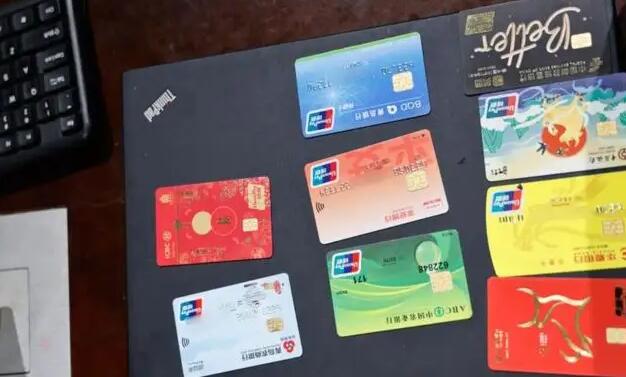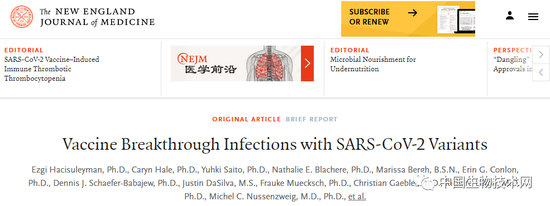译者 王为
文中黑字部分为原文,蓝字部分为译文,红字部分为译者注释或补充说明The Mechanics of Absurdityby Michael Lebowitz
Over the past few decades, the central banks, including the Federal Reserve (Fed), have relied increasingly on interest rates to help modifyeconomic growth. Interest rate management is their tool of choice because it can be effective and because central banks regulate the supply of money, which directly effects the cost to borrow it. Lower interest rates incentivize borrowers to take on debt and consume while dis-incentivizing savings.
在过去几十年中,包括美联储在内的各国央行愈加依赖利率政策的调整来抚平经济增长过程中的波折.利率水平管理之所以会成为其政策工具箱中的选项是因为该手段成效显著,同时央行可以通过控制货币供应量来直接影响借贷成本的高低。低利率会促使借款方增加借贷和消费,但不鼓励存款行为。
Regrettably, a growing consequence of favoring lower than normal interest rates for prolonged periods is that consumers, companies, and nations grow increasingly indebted as a percentage of their respective income. In many cases, consumption is pulled from the future to the present day. Accordingly, less consumption is needed in the future and a larger portion of income and wealth must be devoted to servicing the accumulated debt as opposed to productive ventures which would otherwise generate income to help pay off the debt.
令人遗憾的是,利率长期低于正常水平日益严重的后果是,消费者、企业和各国政府的债务与各自收入金额的比率均出现了大幅攀升。在很多情况下,未来的消费被透支到了现在。因此,未来将不再需要那么多的消费了,同时不得不从收入和财富总量中拿出更多的部分用于弥补高筑的债台,而不是用于更有创造性的经营活动上,这些经营活动能带来更多的收入现金流,更有助于偿付债务。
Today, interest rates are at historically low levels around the globe. Interest rates are negative in Japan and throughout much of Europe. In this article, we expound on the themes laid out in Negative is the New Subprime, to discuss the mechanics of negative-yielding debt as well as the current mindset of investors thatinvestin negative-yielding debt.
当前全球利率水平处于历史低位,日本和大部分欧洲国家的利率水平低于0%。本文的主题是探究一下债券负收益率现象产生的机理以及投资者为什么会买负收益率债券?他们是怎么想的?
Is investthe right word in describing an asset that when held to maturity guarantees a loss of capital?
“投资”这个还能用在一项持有到期后本金却注定要缩水的资产身上吗?
Negative Yield Mechanics债券负收益率现象产生的机理
Negative yields are not only bestowed upon sovereign debt, as investment grade and even some junk-rated debt in Europe now carry negative yields. Even stranger, Market Watch just wrote about a Danish bank offering consumers’ negative interest rate mortgages (LINK).
不仅仅是国债收益率出现了负值,在欧洲连投资级甚至包括一些垃圾债评级的公司债的收益率也是负的。更匪夷所思的是,Market Watch网站上最近有一篇文章写到一家丹麦银行推出了负利率的按揭贷款业务。
You might be thinking, “Wow, I can take out a negative interest rate loan, receive payments every month or quarter and then pay back what was lent to me?” That is not how it works, at least not yet. Below are two examples that walk through the lender and borrower cash flows for negative-yielding debt.
各位可能会想,“天哪,我贷了一笔负利率的按揭贷款,每个月或每个季度银行还会给我一笔利息?”但情况不是这么回事,至少现在还不是这样。下面两个例子将演示一下在负收益率债券的发行方和持有者之间资金是怎么流动的。
Some of the bonds trading at negative yields were issued when yields were positive and therefore have coupon payments. For example, in August of 2018, Germany issued a 30 year bond with a coupon of 1.25%. The price of the bond is currently $143, making the yield to maturity -0.19%. Today, it will cost you $14,300 to buy $10,000 face value of the bond. Going forward, you will receive coupon payments of $125 a year and ultimately receive $10,000 in 2048. Over the next 29 years you will receive $3,625 in coupon payments but lose $4,300 in principal, hence the current negative yield to maturity.
有一些负收益率的债券在当初发行的时候票息率还是正的,因此是有票息收益的。比如,2018年8月德国发行了一只票息为1.25%、期限为30年的债券。当前该券的价格为143美元,到期收益率为-0.19%,当前这只10,000美元面值债券在二级市场的价格为14,300。该券未来每年将支付125美元的票息,最后在2048年偿付10,000美元的本金。未来29年,投资该券将总共获得3,625美元(125*29=3,625)的票息收入,但是本金将损失4,300美元(10,000-14,300=4,300),因此该券当前的到期收益率水平为负值。
如何计算该券的到期收益率?
第一步、整理该券要素如下:
第二步、计算过程。使用EXCEL的YIELD函数,内分别输入结算日;到期日;息票利率;价格;清偿价值;如果付息频率为每半年一次,则输入2;如以实际天数/实际天数为日计数基准,则输入1。结果如下:
Bonds issued with a zero coupon with negative yields are similar in concept but the mechanics are slightly different than our positive coupon example from above. Germany issued a ten-year bond which pays no coupon. Currently, the price is 106.76, meaning it will cost an investor $10,676 to buy $10,000 face value of the bond. Over the next ten years the investor will receive no coupon payments, and at the end of the term they will receive $10,000, resulting in a $676 loss. The lower the negative yield to maturity, the higher premium to par and the greater loss of principal at maturity.
发行时为零票息而二级市场收益率为负值的债券在概念上也与此相似,但是定价机制与前面的正票息率债券略有不同。德国发行过一只10年期的零票息债券,该券当前的价格为106.76,也就好是说,投资者要花10,676美元才能买到这只10,000美元面值的债券。未来10年投资者将拿不到任何票息收益,到期的时候将收到10,000美元,本金损失为676美元。负收益率的程度越深,债券在二级市场的溢价就越高,到期遭受的本金损失就越大。
We suspect that example two, the zero-coupon bond issued at a price above par, will be the issuance model going forward for negative yielding bonds.
我们认为第二个例子中零票息债券的发行价高于面值的情况未来很可能将成为负收益率债券发行的典型案例。
Why?为啥会这样?
At this point, after reviewing the cash flows on the German bonds, you are probably asking why an investor would make an investment in which they are almost guaranteed to lose money. There are twopredominant reasons worth exploring.
关于这一点,在看到德国债券现金流的流转情况后,有人可能会问为啥投资者会做这样一个几乎注定会赔钱的买卖?有两个主要因素值得探讨。
Safety: Investors that store physical gold in a gold vault pay a fee for safe storage. Individuals with expensive jewelry or other keepsakes pay banks a fee to use their vaults. Custodians, such as Fidelity or Schwab, are paid fees for the safekeeping of our stocks and bonds.
安全性:把实体黄金存放在金库中的投资者要支付保管费,拥有价值连城的珠宝或金银细软的个人要付费给银行来使用银行的保管箱,像信诚或嘉信这样的资产托管机构也通过收费来为客户提供股票和债券的保管服务。
Storing money, as a deposit in a bank, is a little different from the prior examples. While banks are a safer place to store money than a personal vault, mattress, or wallet, the fact is that deposits are loans to the bank. Banks traditionally pay depositors an interest rate so that they have funds they can lend to borrowers at higher rates than the rate incurred on the deposit.
存钱比如在银行存款,与前面所说的例子略有不同。虽然在商业银行存钱比放在个人金库中、或床垫下或钱包里要安全,但本质上存款是储户借给银行的钱。银行一直以来都给储户付利息,这样银行就可以获得资金并以比存款利率更高的贷款利率贷给借款人。
With rates negative in Europe and Japan, their respective central banks have essentially made the storing of deposits with banks akin to the storage of gold, jewelry, and stocks – they are subject to a safe storage fee. Unfortunately, many people and corporations have no choice but to store their money in negative-yielding instruments and must lend money to a bank and pay a “storage fee.”
虽然欧洲和日本的利率水平是负的,其各自的央行对待商业银行存款的做法实际上与保管黄金、珠宝及股票是相似的,保管这些东西都是要收费的。遗憾的是,很多个人和公司别无选择只能将钱放在负收益率的资产里,被迫借钱给银行并支付“保管费”。
On a real return basis, in other words adjusted for inflation, whether an investor comes out ahead by lending in a negative interest rate environment, depends on changes to the cost of living during that time frame. Negative yielding bonds emphatically signal that Germany will be in a deflationary state over the next ten years. With global central bankers taking every possible step, legal and otherwise, to avoid deflation and generate inflation, betting on deflation via negative yielding instruments seems like a poor choice for investors.
从对通胀率调整后的实际收益率的角度来看,一个投资者是否能在负利率的市场环境中通过对外借贷取得先人一步的优势要取决于那段时间里生活成本的变化情况。负收益率债券显然说明市场认为德国将在未来10年处于通货紧缩状态。鉴于全球央行会采取各种可能的手段,甭管是应该的还是不应该的,以避免通缩情况的发生并刺激物价上涨,对投资者来讲,通过投资负收益率资产的方式赌通缩情况一定发生似乎是个糟糕的选择。
Greater Fool Theory: Buying a zero-coupon bond for 101 today with the promise of receiving 100 is a bad investment. Period. Buying the same bond for 101 today and selling it for 102 tomorrow is a great investment. As yields continue to fall further into negative territory, the prices of bonds rise. While the buyer of a negative-yielding bond may not receive a coupon, they can still profit, and sometimes appreciably as yields decline.
博傻理论:今天用101元的价格买入一只到期偿还100元的零票息债券是个很糟的投资做法,但是,今天用101元的价格买入同样一只债券,明天以102元的价格卖掉就成了一个不错的投资。随着收益率进一步跌至更深的负利率区间,债券价格将上涨。虽然负收益率债券的投资者没有票息收入,但随着收益率的下行他们仍然可以从中获利,有时还相当可观。
This type of trade mindset falls under the greater fool theory. Per Wikipedia:
这种交易思路就属于博傻理论,根据维基百科的解释:
“In finance and economics, the greater fool theory states that the price of an object is determined not by its intrinsic value, but rather by irrational beliefs and expectations of market participants. A price can be justified by a rational buyer under the belief that another party is willing to pay an even higher price. In other words, one may pay a price that seems “foolishly” high because one may rationally have the expectation that the item can be resold to a “greater fool” later.”
“在金融学和经济学方面,博傻理论认为一个东西的价格并不取决于其所具有的内在价值,而是取决于市场参与者非理性的想法与预期。;一个理性的买家认为如果另一个买家愿意出比当前买价更高的价格,那么当前的价格就是合理的。也就是说,一个人之所以愿意支付看上去很扯淡的高价是因为该人理性地认为这个东西以后会被人以更高的价格买走。”
More succinctly, someone buying a bond that guarantees a loss can profit if they can find someone even more willing to lose money.
简而言之,有人买了一只持有到期注定将亏损本金的债券要想不亏钱,必须找到其他一些宁可冒赔钱风险也愿意以更高价格接盘的人。
Scenario Analysis情景分析
Let’s now do a little scenario analysis to understand the value proposition of holding a negative-yielding bond.
现在做一个小小的情景分析来看懂一只负收益率债券的定价。
For all three examples we use a one year bond to keep the math simple. The hypothetical bond details are as follows:
为方便计算,以下三个案例均以1年期债券为例,假设该债券的要素如下:
Issue Date: 9/1/2019
Maturity Date: 9/1/2020
Coupon = 0%
Yield at Issuance: -1.0%
Price at Issuance: 101.00
Greater fool scenario: In this scenario, the bondholder buys the new issue bond at 101 and sells it a week later at 101.50. In this case, the investor makes a .495% return or almost 29% annualized.
搏傻情景:在此情景中,债券持有人用101元的价格买入一只新发行的债券,一周以后以101.50 的价格卖掉,取得0.495%((101.50-101)/101=0.495%)的回报或29%左右的年化回报率。
Normalization: This next scenario assumes that yields return to somewhat normal levels and the holder sells the bond in six months.If the yield returns to zero in six months, the price of the bond would fall to 100. In this case, our investor, having paid 101.00, will lose 1% over the six month period or 2% annualized.
常态回归:这种情景假设债券的收益率将或多或少地向常态回归,该券在持仓6个月后被卖掉。如果6个月后收益率回到0%,债券价格将跌到100。在此情况下,原先支付101元买入该券的投资者将在6个月后损失掉本金的1%,年化回报率约为-2%。
Hold to maturity: If the bond is held to maturity, the bondholder will be redeemed at par losing 1% as they are paid $100 at maturity on a bond they purchased for $101.
持有到期:如果持有该券到期,该券将按照面值赎回,债券持有者的损失为1%,因为买价为101元而到期收回100元。
Summary结论
Writing and thinking about the absurdity of negative yields is taxing and unnatural. It forces us to contemplate basic financial concepts in ways that defy common sense and rational thought. This is not a pedantic white paper discussing hypothetical central bank magic tricks and sleight of hand; this is about something occurring in real-time.
写作和思考负收益率的荒谬性这个话题让人感到很费脑筋,很勉为其难,我不得不用有悖于常理和理性思维的方式对基本的金融理论做一番思量。本文不是一篇充满学究气的论文,谈的不是中央银行有可能采取的把戏和手段,而是眼下正在发生的情况。
Excessive monetary policy has been the crutch of growth for decades spurred by an intense desire to avoid and minimize otherwise healthy and routine economic corrections. It was fueled by the cult of personality which took over in the 1990s when Alan Greenspan was labeled “The Maestro”. He, Robert Rubin, and Lawrence Summers were christened “The Committee to Save the World” by Time magazine in February 1999. Greenspan was then the subject of a biography by famed Watergate journalist Bob Woodward infamously titled Maestroin 2000.
在过去几十年里,经济成长过度依赖宽松的货币政策,起因是央行有强烈的意愿规避常态化和健康的经济调整或使经济的正常调整效应最小化。助长这一倾向的是1990年代大行其道的对被称为“大师”的格林斯潘的个人崇拜。当时,格林斯潘、Robert Rubin以及Lawrence Summers 被1999年2月份出版的时代杂志吹捧成“救世三人组”,后来曾经报道过水门事件的著名记者Bob Woodward 给格林斯潘写了一篇传记,并毫无廉耻地给该传记起了个《大师》的名字。
Under Greenspan and then Bernanke, Yellen and now Powell, rational monetary policy and acknowledgement of naturally occurring business cycles has taken a back seat to avoidance of these economic cycles at all cost. As a result, central bankers around the world are trying justify the inane logic of negative rates.
在格林斯潘包括之后的伯南克、耶伦以及如今的鲍威尔领导下,理性的货币政策和认为经济周期自然天生的观点让位于不惜一切代价避免经济出现周期性调整的做法。结果就是,全球各家央行处心积虑地给负利率政策的愚蠢逻辑找借口。
免责声明:本网站所有信息仅供参考,不做交易和服务的根据,如自行使用本网资料发生偏差,本站概不负责,亦不负任何法律责任。涉及到版权或其他问题,请及时联系我们。
相关推荐
猜你喜欢









